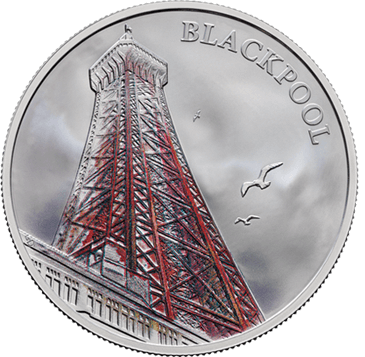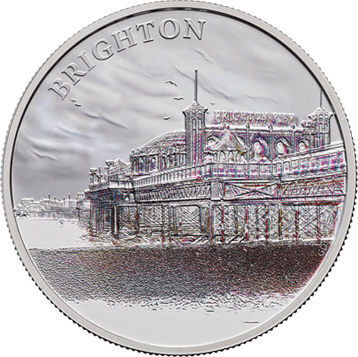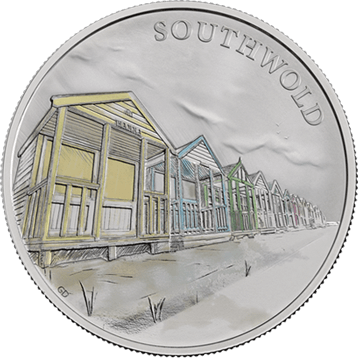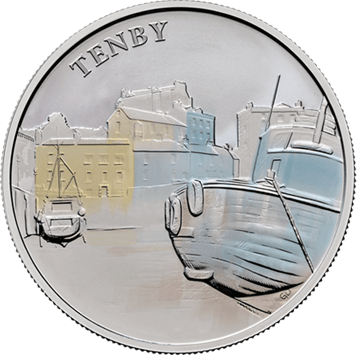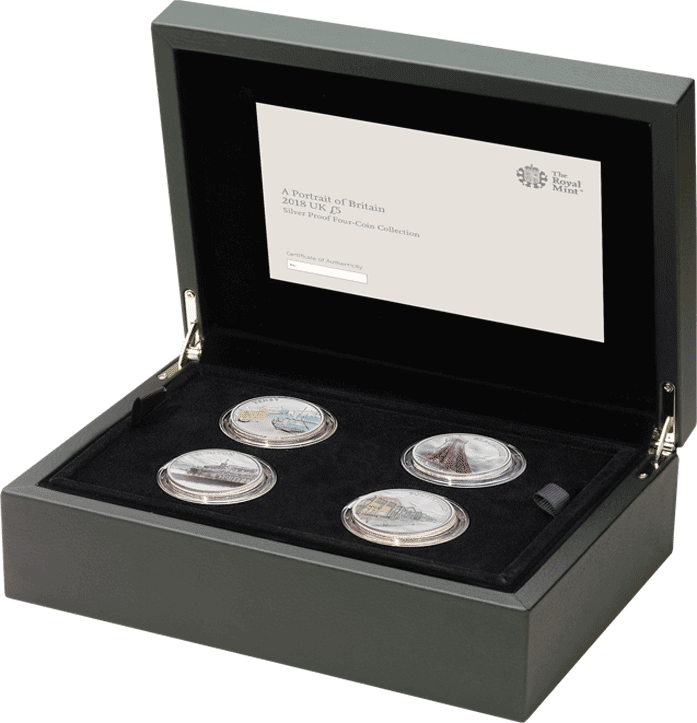Discover the Portrait of Britain Collection
Now in its fourth year, the Portrait of Britain Collection celebrates our most iconic landmarks and landscapes. Since 2015, Royal Mint coin designers Glyn Davies and Laura Clancy have travelled the length and breadth of Britain to study the geographical marvels and architectural gems that attract visitors from far and wide.
For our 2018 collection, they both visited and researched the chosen destinations, with Glyn creating the final designs that appear on the coins.


Britain's Seaside Towns
Blackpool
Come rain or shine, people flock to the Golden Mile to enjoy the beach and attractions. With its new Spanish-style steps and Tower Festival Headland event space, it’s less kiss-me-quick and more contemporary, but not at the expense of tradition. Visitors in the autumn are still treated to the famous illuminations which light up the seafront non-stop for 66 nights from the end of August.
Blackpool’s famous tower was opened to the public in 1894, and at 518 feet, it dominates the skyline. A Grade I listed building, it plays host to a circus and has its own ballroom. The unique sprung dance floor, famous Wurlitzer organ and spectacular surroundings continue to draw dance fans from all over the world.

Brighton
There’s no better place to escape the humdrum of everyday life than Brighton. Progressive and open-minded, this south coast resort has long been a magnet for artists and eccentrics, most famously the Prince Regent, later George IV. Built during the early nineteenth century, his Brighton residence, the Royal Pavilion, is styled as an Indian palace.
Just across the Old Steine from the Pavilion is Brighton Palace Pier. Completed in 1899, it was the third pier to be built in Brighton and the only one that survives today. These days the Grade II listed landmark plays host to a funfair. The pier’s character might have changed, but it remains enduringly popular. Millions visit every year to enjoy the rides, try their luck on the slots or just to take in the stunning view.

Southwold
Every summer, holidaymakers flock to the beautiful seaside town of Southwold in North Suffolk, and the luckiest get to play house in one of the famous painted huts that line the beach. In the nineteenth century people began to visit resorts like Southwold to bathe in the sea, although British prudishness meant that wealthy people rented bathing machines to protect their modesty while changing their clothes.
After the First World War, attitudes to mixed bathing became more relaxed and many of these machines were abandoned on the beach. Stripped from their wheel carriages and moved up onto the ‘prom’, they became the huts we know today. The quirkiness of Southwold’s famous beach huts owes much to the 1960s. Their vibrant colours capture the essence of a decade unconstrained by social conventions.

Tenby
Tenby is very much the jewel in Pembrokeshire’s crown. Revived as a seaside resort during the Georgian era, when visitors came to enjoy the fresh air and undertake botanical studies, this beautiful walled town exudes old world charm.
Built into the corner of the North Beach is the town’s picturesque harbour. Brightly painted houses look out over a flotilla of small boats tied to their moorings. To the south of the harbour are two lifeboat stations. One was built in 1905, the other in 2008, and old and new sit by side by side. Children play on the small beach tucked under the harbour wall, while boat trips depart to the monastic retreat of Caldey Island, home to an order of Cistercian monks, rare flowers and a plethora of wildlife including seals and seabirds.


